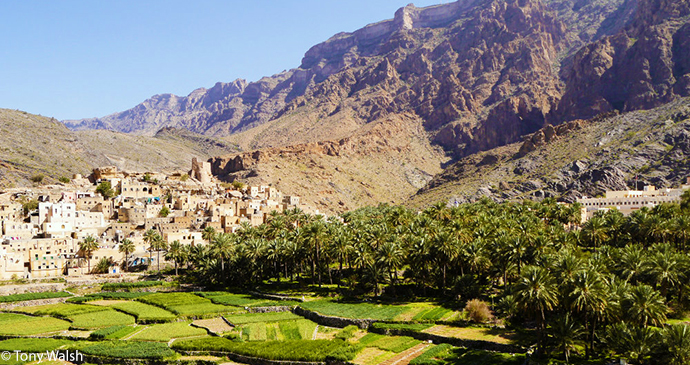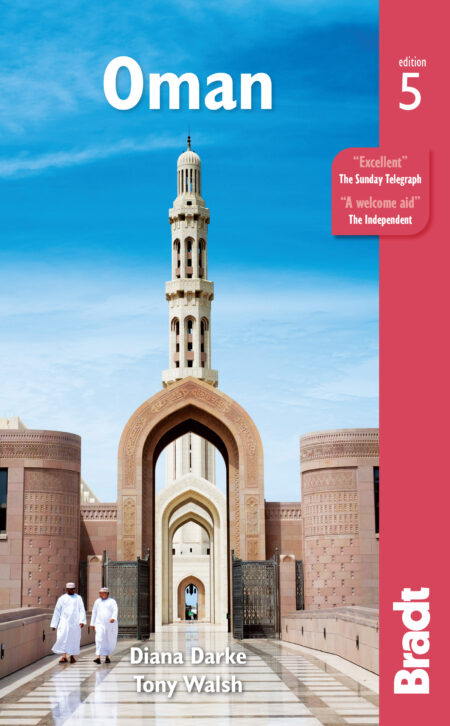Date palms are in many respects the tree of human life in Oman. Date palms are single-sex trees and, as only a female tree produces fruit, male palms are simply required for pollination. It is not unusual, therefore, to have a single male palm provide the pollen for 100 female palms as farmers do not want space wasted on non-fruit-producing palms.
The only way this sex ratio can be sustained is by hand pollination; a random breeze or insect is of no benefit. Therefore, in January and February, when the date palms flower, the practice in Oman is that a man has to climb to the crown of a female tree and pollinate the female flowers with male flowers that have been taken from a male tree. The dates then grow from the size of a small green pea to their familiar ripe form of various shades of brown. From mid-May when the heat ripens the fruit, the date harvest gets into full swing and once again, in Oman, a man climbs up to the tree’s crown to harvest them.
Dates are then brought to market in places such as Ar Rustaq, Samail and Sinaw, or pre-sold to a date-packing factory. Omani dates are bought and sold in a traditional measure called manns, roughly 4kg. Dates arrive most days during the season at the suq, from where they are traded by professional date auctioneers, who take a 10% commission.
Prices start out high at the start of the season, at about OMR5–7 per kilo, then as the season progresses they can drop to as low as 500 baisa by peak harvest in mid-June. With up to 150kg of dates produced per tree, the farmer may receive OMR100 or more per tree for preferred varieties.

The season ends in late summer. However, this is not the end of the date’s story. Dates can be stored, in different forms, for around two years as their high sugar content prevents decay. Some date varieties, having been boiled then dried, might be exported to India which has been a historical destination for Oman’s dates. Others are dried in the sun for long-term storage, while another option is to pack them tightly together, into an almost solid mass. Irrespective of all these methods, it is the fresh date that is the most delicious, with its ripe flesh almost melting in your mouth.
Emphasising the importance of dates in Oman, a government project, the Million Date Palm Plantation Project, intends to grow a million palms, in non-traditional agricultural areas due to the size of the nine farms involved. They grow four main varieties of date and also market them under the brands Tamrah, Nizwa and Zaad. Waste products are converted to animal feed and compost.
However, it is not just the fruit that makes the date palm so valuable to Oman; every part of the tree is used. Artisans braid the leaf frond into baskets, food covers, flooring, sleeping mats and fans; the fibre to ropes and scourers; and the ribs to fish traps, chicken coops and clothes fumigators. Together with timber from local acacia, homes and other shelters can be easily created from palm leaf midribs, while complete leaf fronds have been used in roofing, fencing and summer housing (barasti) especially on beaches or in open desert.
More information
For more information, check out Tony Walsh’s guide to Oman:
